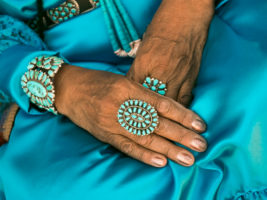On October 12, Vermont will celebrate its second Indigenous Peoples’ Day. Indigenous Peoples’ Day aims to celebrate and honor the past, present, and futures of Native peoples throughout the United States and acknowledges the legacy of colonialism, which has devastated Indigenous communities historically and continues to negatively impact them today. One of those negative impacts is poorer health.
Type 2 diabetes affects American Indians and Alaska Natives at three times the rate of their white peers and is linked to high rates of heart attacks and strokes, according to a new report. The scientific statement from the American Heart Association, published its journal Circulation, gives an overview of cardiovascular disease disparities faced by people in these communities.
2 diabetes affects American Indians and Alaska Natives at three times the rate of their white peers and is linked to high rates of heart attacks and strokes, according to a new report. The scientific statement from the American Heart Association, published its journal Circulation, gives an overview of cardiovascular disease disparities faced by people in these communities.
According to the Vermont Department of Health, 42% of Vermont’s Native Americans smoke commercial tobacco, compared with 32% of American Indians and Alaska Natives using tobacco nationally – which is already a rate nearly double that of other U.S. ethnic populations. Traditional media campaigns and smoking policies to help tackle tobacco use are less effective than other culturally adapted methods of community reinforcement, according to the statement.
Heart disease rates are about 50% higher among the 5.2 million people in the United States who self-identify as American Indian and Alaska Native compared to their white counterparts. More than one-third of their deaths attributed to cardiovascular disease occur before age 65. Those with cardiovascular disease are seeing higher rates of complications from COVID-19, accounting for 40% of those hospitalized.
“Racial and ethnic minority groups in the U.S. have suffered from inequitable policies for hundreds of years. These policies have contributed to mistrust in the traditional health care system,” Dr. Khadijah Breathett, chair of the statement’s writing committee, said in a news release. “The most effective way to create change is through restructuring of inequitable policies and empowerment of communities.”
Displacement, war, infectious disease, unfulfilled agreements and decimation of tribal lands by the federal government in the 1800s created a wariness among many American Indians and Alaska Natives. Forced removal from native lands and living in rural areas with limited access to health care worsen the situation. The federal Indian Health Service provides care for 1.6 million American Indians and Alaska Natives – less than one-third of their total population.
Breathett, an advanced heart failure and transplant cardiologist at Banner–University Medical Center in Tucson, Arizona, said health care professionals and policymakers shouldn’t ignore the “urgent cardiovascular health risks” for American Indians and Alaska Natives.
An estimated 30% to 40% of American Indians have obesity, a major contributor to Type 2 diabetes. The Strong Heart Study, cited in the statement, found some of the risk for obesity and diabetes is inherited.
The most effective ways to help, the authors said, are to build relationships, seek the support of leaders, and figure out the barriers and what resources they need – all done in a way that recognizes bias and respects culture.
For instance, community talking circles that allow for shared decision-making between a patient and their health care provider have been a longstanding tradition among some American Indians and Alaska Natives. In talking circles, everyone in the group has the right to provide uninterrupted perspectives, and they’ve been used to educate and manage diabetes in hard-hit communities.
“Health care providers must individualize care by identifying the individual patient’s needs and matching them to the appropriate resources, such as community-based interventions,” Breathett said.
Patients, health care professionals and community stakeholders should all learn the risk factors for cardiovascular disease and act to prevent it, she said. “We are all in this together.”